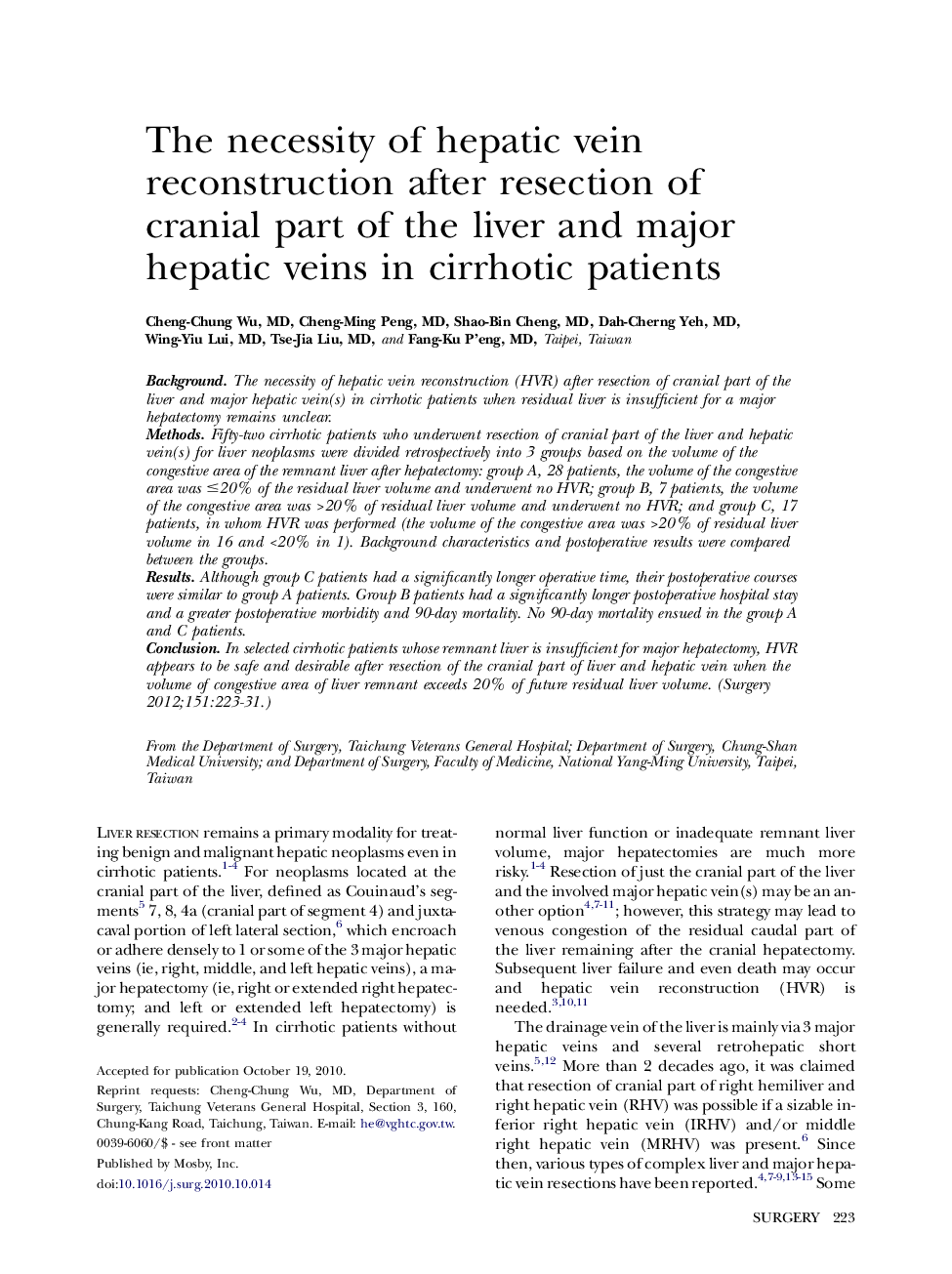| Article ID | Journal | Published Year | Pages | File Type |
|---|---|---|---|---|
| 4308204 | Surgery | 2012 | 9 Pages |
BackgroundThe necessity of hepatic vein reconstruction (HVR) after resection of cranial part of the liver and major hepatic vein(s) in cirrhotic patients when residual liver is insufficient for a major hepatectomy remains unclear.MethodsFifty-two cirrhotic patients who underwent resection of cranial part of the liver and hepatic vein(s) for liver neoplasms were divided retrospectively into 3 groups based on the volume of the congestive area of the remnant liver after hepatectomy: group A, 28 patients, the volume of the congestive area was ≤20% of the residual liver volume and underwent no HVR; group B, 7 patients, the volume of the congestive area was >20% of residual liver volume and underwent no HVR; and group C, 17 patients, in whom HVR was performed (the volume of the congestive area was >20% of residual liver volume in 16 and <20% in 1). Background characteristics and postoperative results were compared between the groups.ResultsAlthough group C patients had a significantly longer operative time, their postoperative courses were similar to group A patients. Group B patients had a significantly longer postoperative hospital stay and a greater postoperative morbidity and 90-day mortality. No 90-day mortality ensued in the group A and C patients.ConclusionIn selected cirrhotic patients whose remnant liver is insufficient for major hepatectomy, HVR appears to be safe and desirable after resection of the cranial part of liver and hepatic vein when the volume of congestive area of liver remnant exceeds 20% of future residual liver volume.
